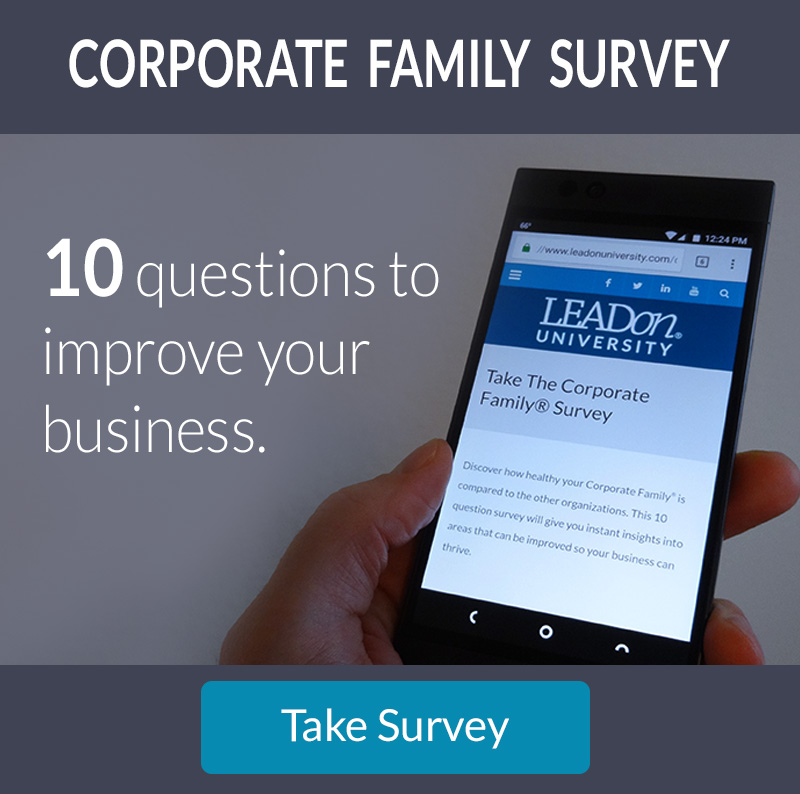
Creating Unity in Your Corporate Family
The CEO’s story about developing a more unified team almost seemed too simple, so LEADon® queried her further about her successful meeting. “I Grubhub-ed the entire team, even our remote employees. That way everyone could enjoy lunch while we watched this month’s online leadership course and downloaded afterward.” According to this leader, enthusiasm at the meeting was palpable, with 100% attendance and each one energized for their next get-together.
The team at LEADon couldn’t be more pleased with these kind of results which many leaders are experiencing as they emphasize the concept of unity in their organizations. While creating connections among team members has always been important, today’s climate makes this effort more critical than ever. People are longing for harmony in their personal and professional lives, yet often they need someone to cultivate an environment that encourages collaboration and cohesion for this to occur.
To assist leaders who want to create more unity in their Corporate Family®, LEADon has developed online courses that target this crucial topic. In particular, LEADing by Building a High Performance T.E.A.M.® details four elements that are essential for group synergy while encouraging commitment to common goals:
Trust: Nurture an environment which urges everyone to commit to one another; trust is a must for High Performing Teams!
Encourage: Create a “Culture of Appreciation” and then cascade this culture to every part of your organization.
Attach: Promote healthy interpersonal relationships; the attitude “I need you; you need me” begins with leaders and then can be cascaded throughout your company.
Model: Demonstrate Values and Beliefs through your Behavior Patterns because actions truly do speak louder than words.
In Chapter 6 of The Leading Edge: 9 Strategies for Improving Internal and Intentional Leadership (2019), we explain that “unity is all about being there for one another” (p. 114). This starts with leaders who model commitment while creating opportunities for those in their care to build trust, strengthen connections, and feel appreciated. As we’ve discovered over the years, individuals who are part of this type of unified T.E.A.M. are not only more content at work but will also typically “subordinate their agendas to what is best for the team” (p. 115).
How can you implement this T.E.A.M. approach in your organization? Let’s use the leader’s story that started this blog as a springboard for some practical strategies:
- Schedule a get-together for your team members with part of agenda being interpersonal connectivity. LEADon recommends using some kind of rapport builder (10-20 minutes) to get the session started, and, if possible, provide a meal so team members can stay energized (especially during longer meetings).
- Include pertinent leadership training that will inspire your employees in their respective roles and responsibilities. Allow time for conversation about the material you’ve covered, either in small groups or as a collective team.
- Acknowledge a few team members for specific achievements that have benefited your Corporate Family. You can reinforce their accomplishments by handing out a small, yet meaningful reward for their efforts (who doesn’t like a gift card to the local coffee house?)
- End each get-together with 10-15 minutes of feedback. At LEADon, we use a Plus/Delta technique at the conclusion of our presentations so participants can share what they valued and what they’d like to see improved next time. Be sure your leadership team reviews this feedback and incorporates recommendations at upcoming events.
As you will discover, time spent implementing this T.E.A.M. approach can be of benefit with every group in your sphere of influence. If the LEADon team can assist you in creating more unity in your Corporate Family, please connect with us at 858.592.0700 or www.LEADonUniversity.com. We also recommend exploring some of our free resources like The LEADing Blog where you’ll find additional strategies to support your current and future leadership needs.
